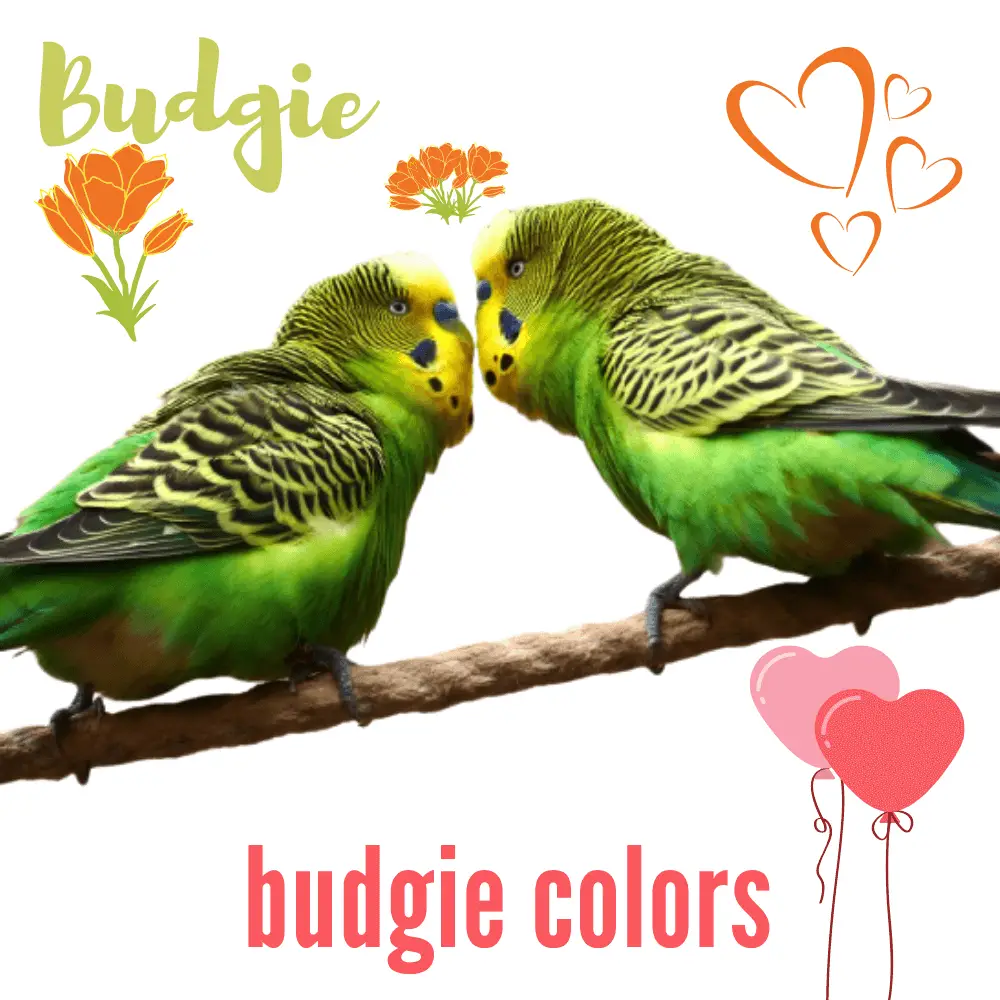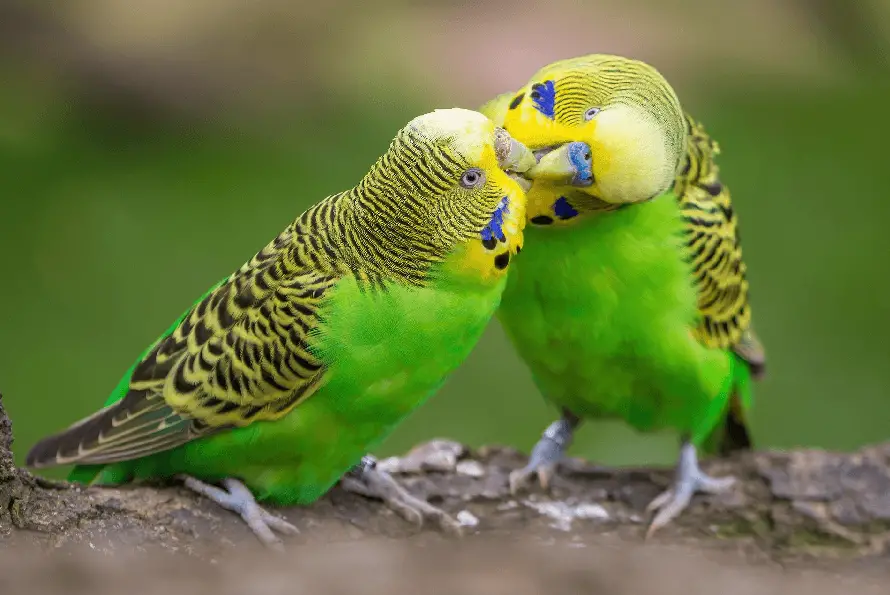
How long do parakeets live on average? Budgerigar lifespan: Budgerigar lives an average of 15 years, but it really depends on the species. Parakeets can live between 5 and 20 years.
Budgie life expectancy: there are three different species of parakeets and here is their lifespan:
- The parakeet lives on average from 5 to 10 years.
- The monk parakeet lives on average from 15 to 20 years.
- The ordinary parakeet lives on average 15 years.
Now that you know the lifespan of each parakeet species, you need to know how to take care of them to make sure they reach and even exceed that expectation. In this article, I will explain how to take care of your parakeet, what to feed it, how to house it, and what to do if it gets sick.
What is the average lifespan of a Budgie?
SOURCE:Alen AxP
Care to take care of your parakeet
In order for your parakeet to live as long as possible, you need to know how to properly care for it. Parakeets, or parakeets, are the most common parakeets to keep as pets, and perhaps the most common bird to keep as pets in general.
The Cage
The first step to keeping a parakeet healthy is to properly prepare its cage. Buy a large cage, larger than the one you think you need. Your parakeet must be able to stretch its wings, play, and even free-fly a little in the cage.
The parrot cage should not be circular, otherwise, the parakeet will not be able to spread its wings. It must be wider at the top than at the bottom and its top must be square.
You may be tempted to buy a cage with a nice lid, but you have to stop. It may be pretty, but these cages are not good for your parakeet. Birds like quails fly vertically, but birds like parakeets fly horizontally, which means they want as much space as possible horizontally.
Buying a cage with a fancy and pinched lid is a waste of space and money.
You need to make sure that the cage you choose is easy to clean. Make sure your hand can get in and out of the cage easily. The bottom of the cage must be able to slide so that you can empty it regularly. You need to be able to easily change and clean the bowl and water dispenser.
Buy a cage that lets in a lot of light. It should be large enough for you to place a few toys and perches in it without your parakeet being cramped. Parakeets are very active and should not feel cramped.
You should only have two budgies per cage (unless, of course, you have a cage the size of a small room, in which case you can have more than two, I guess).
Have a food dish and water dispenser easily accessible for you and your parakeet in the cage.
It is essential to have a happy and healthy parakeet to help him live as long as possible. As long as you give it enough space to exercise and fly, you can significantly increase its lifespan. It is also essential to keep them in a clean environment, as your bird cannot be healthy if its cage is not.
Budgerigar lifespan

Toys and perches
Choose two or three parrot toys to put in the cage for a parakeet and arrange several perches at different heights around the cage. Toys are a source of stimulation for your parakeet. If they get bored, they can start pulling out their feathers. The best toys are usually balls, ropes, and/or bells.
For perches, it is better to choose natural perches. Try to find a perch made of eucalyptus wood. Avoid prunus perches (as they contain cyanogenic glycosides, which can harm your bird) and oak wood perches (as they contain tannins, which can also harm the health of your parakeet).
If you choose the wrong type of perch, you may be hurting your parakeet, and you want to make sure it lives as long as possible.
Perches should be stable, placed at different heights, and spaced in the cage. Your budgie will want to fly and play, so there must be enough things in its cage to stimulate and entertain it. Again, it is important to give your parakeet a cage in which she can exercise so that she can live a long and healthy life.
The installation of a mirror in the cage of your parakeet is the subject of some controversy. Parakeets tend to entertain themselves by talking and looking at each other for hours. However, some studies might show a link between single parakeets with mirrors and psychological damage.
Parakeets are very social, they can feel lonely if they only have a reflection of themselves. The presence of a mirror in your parakeet cage can also lead to crop infections in your bird.
Birds like to regurgitate food for their companions (do not ask me why I have no idea), but the mirror bird will not return their affection. Obviously, if you want your parakeet to live as long as possible, crop infections are not ideal.
If you pay enough attention to your budgie, she should get by. If you want to put a mirror in their cage, make sure it is securely secured to prevent your bird from getting hurt.
You might also consider taking a second parakeet to accompany the first one in her cage, so she can have contact with a real bird instead of a reflection. Parakeets live longer if they have more social interactions.
This social interaction can take the form of contact with you, but it is better if he also has a budgie companion.
Environment
Put your parakeet cage in a warm room with lots of light. Do not put the cage next to a sunny window, as prolonged exposure to heat could harm the parakeet. Also, avoid placing the cage near an open door or a door that opens and closes often.
The cold draft can also harm your bird. Sunlight is important for keeping your parakeet healthy, but we all know that excess of a good thing can always be harmful.
Clean the cage once a week. The easiest way I’ve found to clean a birdcage is to cover the bottom with a newsprint, then remove the newsprint and replace it when the time comes. Keeping a cage clean is paramount if you want to extend the life of your parakeet.
Parakeets do their business every 15 minutes or so, so you really need to clean the cage once a week (or more often if you deem it necessary for your bird to be happy and healthy).
When cleaning the cage floor, use only mild dish soap and water. If you use other chemicals or cleaning, you may injure your parakeet.
Another thing to include in your parakeet cage is a bird shower. Parakeets like to clean themselves, splash around and even go into the water from time to time for fun. Be sure to change the water often and never overfill the tub, otherwise, your parakeet could do damage.
You can also spray your parakeet with bird spray from time to time to clean and refresh it. This can be a fun game to play with your budgie.
When it’s time for your bird to sleep (or when there will be noise in your home), drape a towel or blanket over the cage. This will allow your parakeet to stay in a darker area and block out some of the sounds. Make sure your parakeet always gets enough air.
One way to do this is to leave the back of the cage uncovered. The towel or blanket should be made of a material on which your bird will not be able to take its claws.
If your parakeet is afraid of darkness (yes, it can happen and yes, she will let you know), you can place a night light nearby, on or in her cage. Don’t let your parakeet panic, as it could fly frantically in all directions and end up injuring itself or its cage mates.
Include family
You need to give your parakeet a name and use it often, especially when feeding it. This will make her more familiar and comfortable with you. After all, you can’t eat when you’re not comfortable.
Gradually introduce your family and home to your budgie. Ask your family to meet your birds one by one. Ask them to feed your parakeet and call it by name. If you have other pets, make sure they don’t hurt your bird. Supervise young children when handling the parakeet.
You need to treat your budgie with love and kindness. Be sure to be gentle, as you are stronger than you think and you can end up hurting your fragile bird if you are not careful.
Even if you feel like it, don’t kiss your parakeet, and be sure to warn anyone who handles it not to kiss it. Human saliva is actually toxic to parakeets and can carry diseases that will be detrimental to your bird. Kissing your parakeet can even shorten its lifespan.
Talk and play with your parakeet often. They need to know that you love them and associate good memories with you. They are social animals and they will love getting to know you. Once they are comfortable with you, they will play with you for hours.
You can also feed your parakeet by hand. Soak your finger in water and then in seeds so that the seeds stick to your finger, then stretch your finger towards your parakeet so that it can nibble. You can also hold your parakeet in one hand and hold a larger food (like a banana) in the other and let it snack and peck.
Once your budgie is comfortable and used to your home, you can let it out of its cage so that it can fly (be careful, however, remember that it does its business every 15 minutes).
Close all doors and windows and make sure the cat is not in the room. Stay in the room to supervise and let your parakeet fly everywhere.
When it’s time to call your parakeet back into its cage, create a single light source, such as a window, and stand close to it. Your parakeet will be attracted by the light and you can serve as a perch to which it will fly naturally. Gently put it back in its cage and make sure it is tightly closed.
Budgerigar lifespan

The diet of your parakeet
Bird seeds are pet bird food of choice, but bird seeds should only make up one-sixth of your parakeet’s diet. Don’t let your parakeet gorge on seeds, as this may shorten its lifespan.
Bird seeds alone don’t offer all the nutrients your parakeet needs to be healthy. Too much birdseed can lead to cancer, obesity, and other health problems in your bird.
The rest of your parakeet’s nutrition and diet should include fruits and vegetables (mostly dark green or yellow in color), boiled eggs, and grated cheese, as well as additional minerals like cuttlefish bones or mineral blocks.
The fruits you can give to your parakeet are:
- Apples
- Grapes
- Mangos
- Bananas
Vegetables you can give your parakeet include:
- Pumpkin
- Carrots
- Parsely
- Broccoli
- Sweet potato
- Squash
- Spinach
Make sure that any extra food you give your parakeet is raw (except for the boiled egg). Cooking food can lead to a loss of some important nutrients.
The variety is really good for your parakeet, but you need to be careful to limit the treats, giving them no more than half a teaspoon at a time.
If you have chosen to give your parakeet a cuttlefish bone or mineral block, make sure that it is securely fixed on the side of the cage, with the soft face facing your bird, so that it can scratch it.
Your parakeet should eat seeds and pellets every day, fruits, vegetables, and soft foods every other day, as well as boiled eggs and grated cheese once a week.
If your parakeet isn’t eating, try chopping raw fruits and vegetables and placing them in an empty food cup. If you want to introduce something new into his diet, do it gradually.
Make sure your parakeet can easily access its food and water at all times. They know how much they need to eat and drink. If your parakeet doesn’t eat or can’t eat for 24 hours, it can get very sick.
Change and clean the water dispenser every day. Only clean the dispenser with water and vinegar, as other products in your parakeet water could harm it. Vinegar prevents the proliferation of bacteria in the water dispenser.
Water and food should be placed next to each other so that your parakeet can eat and drink at the same time. The feeder should not be too deep so that your parakeet does not have to dig to reach its food.
Budgerigar lifespan

What to do if your parakeet gets sick?
Sick parakeet symptoms: You should take your parakeet to the vet for a check-up at least once a year. If your bird begins to show symptoms that make you think it is sick, take it to the vet immediately. A stitch in time saves nine.
Common symptoms are:
- Abnormal breathing
- Discharge from the eyes or beak
- Mucus on feathers
- Abnormal behavior
- Weight loss
- Obesity (loss of tapered appearance or lethargy)
Always make sure that your parakeet has enough space to exercise, that it is allowed to be sociable enough and that it has a proper diet (with a good variety), and your bird should live a long and happy life.
Related issues:
How do you know if your parakeet is an adult? When parakeets are babies, they have pure black eyes. This usually lasts about four months. After four months, the iris begins to fade to light gray or brown. This phenomenon stops at the age of eight months, the age at which they become adults.
Do parakeets live longer in captivity? The only place where you can see parakeets in the wild in Australia. In captivity, parakeets can live up to 20 years, but in the wild, their life expectancy is shorter. This is mainly due to predators, irregular feeding, and exposure.



















